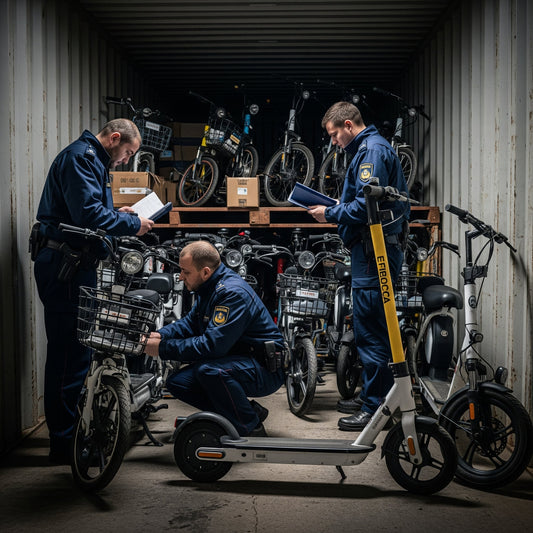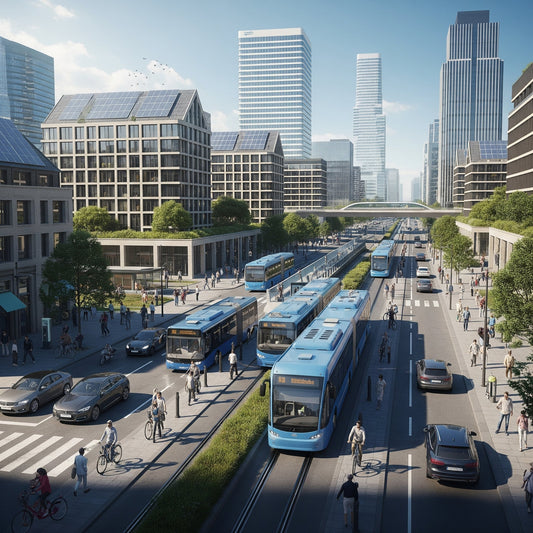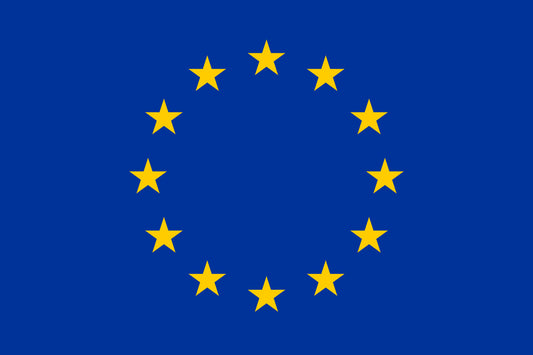The Future of Urban Mobility: Why Europe Is Switching to E-Mobility
Europe’s big cities are betting on electric mobility to hit climate targets, unclog streets and clean the air. New EU rules, falling battery costs and fast-growing shared-mobility services are accelerating the shift.

Europe’s big cities are betting on electric mobility to hit climate targets, unclog streets and clean the air. New EU rules, falling battery costs and fast-growing shared-mobility services are accelerating the shift.
1. Policy Push: The EU Builds the Framework
1.1 2035 Zero-Emission Mandate
Under the Fit for 55 package, every new car and van sold after 2035 must be zero-emission [1].
1.2 AFIR: Charging at Scale
The Alternative Fuels Infrastructure Regulation obliges each Member State to provide at least 1.3 kW of public charging capacity per registered battery-electric car and to install fast-charging hubs every 60 km on core highways [2].
1.3 Heavy-Duty & Bus Standards
Revised heavy-duty CO₂ limits require a 45 % cut by 2030 and 90 % by 2040, while 90 % of new urban buses must be zero-emission by 2030 [3].
2. Urban Headaches: Congestion & Air Quality
London drivers still lose 101 hours a year in traffic, draining £7.7 billion from the UK economy in 2024 [5].
Air quality is improving but remains a challenge: London’s roadside NO2 concentrations are down 49 % from 2016 levels after the city-wide ULEZ, yet 96 % of urban Europeans still breathe PM2.5 above WHO guidelines [4],[7].
3. Market Momentum: From Cars to Buses
BloombergNEF expects nearly 22 million battery-electric and plug-in hybrid cars to sell globally in 2025, with Europe taking a 17 % share [9].
Cities are flipping their bus fleets fast: 49 % of new EU city buses in 2024 were zero-emission, up from 36 % in 2023 [8].
4. Shared & Micromobility Boom
Shared-mobility usage hit 640 million trips across Europe in 2024. London alone logged 28 million dockless-bike rides, while Paris’ Vélib’ recorded almost 50 million trips [6].
5. Cities Re-imagined
Kerbside parking is giving way to charging hubs and parklets; quieter e-buses soften noise pollution; and vehicle-to-grid pilots—like the deployment of 500 bidirectional Renaults in Utrecht—are turning EV fleets into distributed storage for renewables [10].
6. Key Takeaways
- The EU’s 2035 ban on new combustion cars is locked in [1].
- AFIR guarantees dense, interoperable charging networks [2].
- Heavy vehicles and buses are next in line for deep decarbonisation [3].
- Air-quality and congestion benefits are already observable in major cities [4],[5].
- Shared e-mobility and zero-emission buses are scaling rapidly [6],[8].
- Vehicle-to-grid pilots hint at a more resilient urban energy system [10].
References
- European Commission, “Fit for 55: EU reaches new milestone to make all new cars and vans zero-emission from 2035,” 28 Mar 2023.
- ICCT, “European Union Alternative Fuel Infrastructure Regulation (AFIR) Policy Update,” Apr 2023.
- Reuters, “EU countries approve law to slash trucks’ CO₂ emissions,” 13 May 2024.
- Transport for London, Silvertown Tunnel Air-Quality Baseline Monitoring Report, Dec 2024.
- INRIX, “Urban Congestion in 2024 & Beyond,” 10 Feb 2025.
- EU Urban Mobility Observatory, “Shared mobility trips in Europe rose to 640 million in 2024,” 3 Apr 2025.
- Environment Agency Austria, “Europe’s air quality status 2024,” 6 Jun 2024.
- EcoWatch, “49 % of New Buses in EU Were ‘Zero-Emission’ Models in 2024,” 4 Mar 2025.
- BloombergNEF via Ackodrive, “Electric Vehicle Sales Set to Soar Globally in 2025,” 18 Jun 2025.
- Reuters, “Dutch car-sharing firm adds Renault EVs capable of powering local grid,” 4 Jun 2025.







